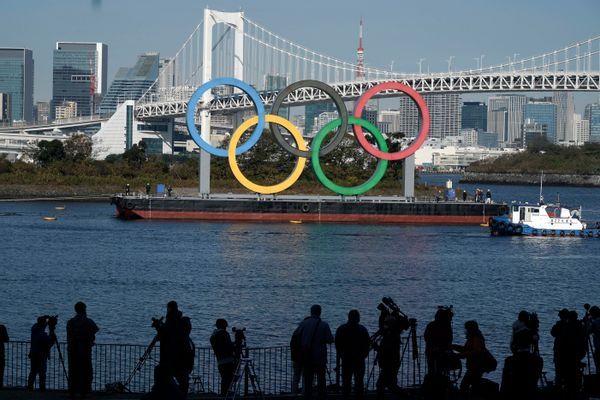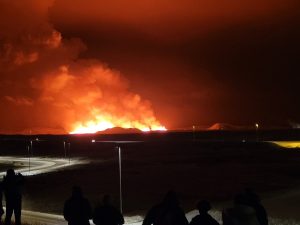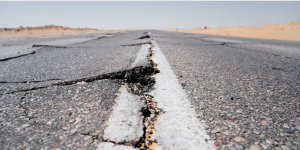The authorities at Tokyo have said that they are ready to counter COVID-19 as the Olympic Games take place at the Japanese capital later this month. However, experts believe that natural calamities – earthquakes and typhoons – are some other major threat clouds hovering over the multi-sport international event. The Olympic Games are set to begin on July 23.
Also read: Jessica Springsteen, the Tokyo Olympics participant with a celebrity connect
According to Swiss research company Quantectum Global, the probability of an earthquake striking Japan will be the highest in mid-July and around August 15.
An earthquake is not it. Typhoons could also play a spoilsport during the Olympic Games. Japan is regularly rattled by earthquakes and battered by typhoons, and experts warn that disaster preparation for a major event like the Games should not take a back seat because of the virus.
Also read: Tokyo Olympics: IOA chief flags long waits at immigration without food, water
“For organisers, infection measures are an urgent challenge,” Hirotada Hirose. But the risks of a major earthquake mustn’t be forgotten when you have an Olympics hosted by Japan,” added Hirose, professor emeritus at Tokyo Woman’s Christian University,” a specialist in disaster risk studies, told AFP.
The geographic location of Japan, sitting on the Pacific ‘Ring of Fire’, places it on an arc of intense seismic activity that stretches throughout southeast Asia and across the Pacific Basin.
Apart from the earthquakes and typhoons, the island country is also home to numerous active volcanos and is regularly hit by typhoons in the season that runs from around May to October, peaking in August and September.
Also read: US star swimmer declines to take COVID-19 vaccine ahead of Tokyo Olympics
“Japanese people tend to have a base layer of knowledge when it comes to disasters. But things become 10 times more complicated when you add factors like language, lack of cultural understanding and the other vulnerabilities that people have as visitors,” Robin Takashi Lewis, a disaster specialist told The New York Times.
When Japan hosted the Rugby World Cup in 2019, three pool matches were cancelled because of Typhoon Hagibis, which killed more than 100 people and caused widespread flooding.
Tokyo and surrounding areas sit precariously at the junction of shifting tectonic plates, and experts and officials regularly warn residents that the next “Big One” could strike at any time.
Also read: ‘Strange atmosphere’: Disappointed athletes brace for crowd-free Tokyo Games
Before last year’s postponement, large-scale exercises were organised to rehearse the response to a massive quake ripping through Tokyo Bay.
“There has been an earthquake. Please stay calm and protect yourself,” blared a message in Japanese and English at one venue.
“Taking action in a panic may lead to danger.”
Tokyo 2020 says it has contingency plans for various natural disasters, “prioritising the safety of spectators and people involved”, though they declined to offer further details.
The risks are real, said Toshiyasu Nagao, an expert on earthquake prediction studies with Tokai University’s Institute of Oceanic Research and Development.
“It would be no surprise if a big earthquake hit directly beneath the capital tomorrow,” he told AFP.
“And it’s not just in Tokyo, the risks of an earthquake are everywhere in Japan.”
Seven earthquakes of magnitude six or higher have hit Japan so far this year, including a 7.3-magnitude quake in February, and a March jolt that sparked a tsunami advisory.
Also read: No spectators, No Nick Kyrgios: Aussie Tennis star pulls out of Olympics
Japan is also haunted by the 2011 quake which triggered a tsunami that killed more than 18,500 people and caused the Fukushima nuclear disaster.
Tokyo’s government says the city’s permanent Olympic venues feature the latest technology in case of disaster.
The $340 million Ariake volleyball arena, for example, has shock-absorbing giant rubber cushions to keep it safe even during violent shaking, and is certified for use as a shelter.
Waterfront facilities, including the Olympic Village, are built on embankments or protected by sea walls that can withstand a tsunami of almost two metres (6.5 feet) — the maximum height predicted inside Tokyo Bay, the city says.
In some ways, the pandemic has made potential disaster response less complicated as almost all fans will be barred from the Games, making the prospect of mass spectator evacuations unlikely.
But some 70,000 athletes, media and officials will still be in Tokyo for the Olympics and Paralympics, and controlling infection risks during an emergency response could be difficult.
Japanese authorities have already updated their emergency policies, limiting space at shelters to avoid crowding and stocking up on masks and disinfectant.
“Evacuation management can directly contradict infection control measures,” warned Sakiko Kanbara, professor of disaster nursing at University of Kochi.
“We have to be aware that a disaster in ordinary times is quite different from one in a pandemic.”
Still, emergency preparation is so deeply embedded in Japanese life that Tokyo even has several disaster simulation centres where visitors can experience artificial jolts and practice evacuation.
On a recent visit to the Ikebukuro Life Safety Learning Centre, English teacher Mike Diakakis said he had found a quake in Tokyo earlier this year “a little nerve-wracking”.
“You don’t really think about it until you’ve experienced it,” he said.







